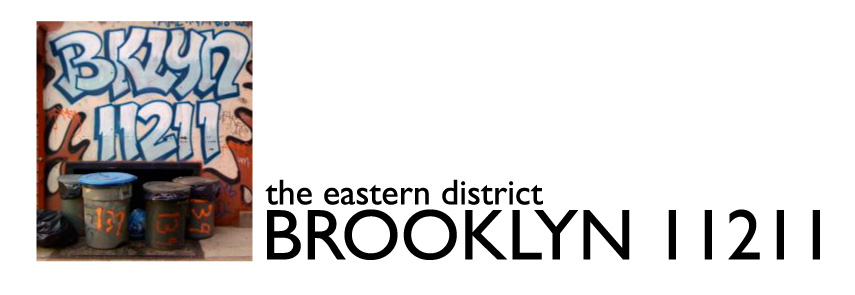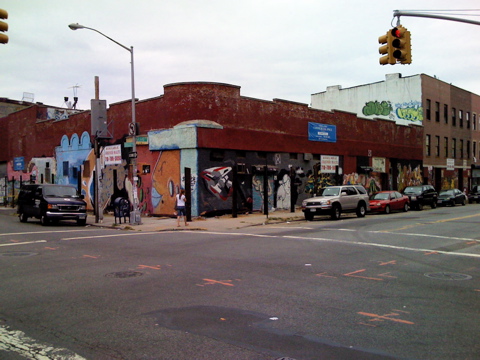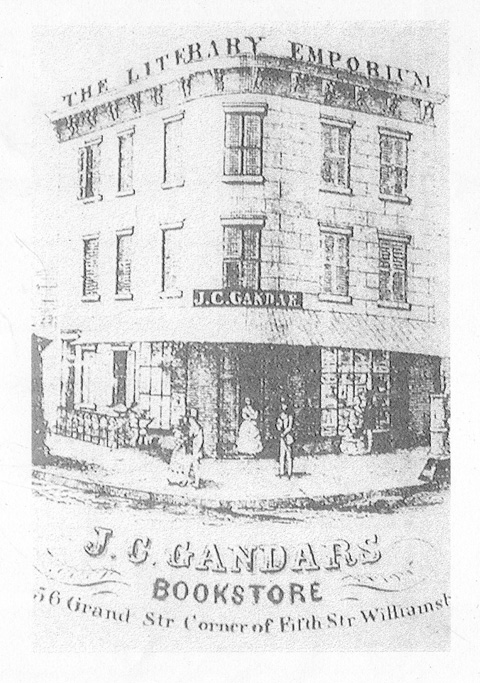I am a big fan of Brownstoner and the community he has created on his blog, and usually I am in tune with his thinking on issues of development, design and so on. Today, though, he has staked out a position on the question of eminent domain that is, quite simply, off base. Writing about the City’s negotiations for property in the Bushwick Inlet area for a future city park, Brownstoner takes the position that eminent domain is wrong. Period. I’ll admit that I am not very close to the Atlantic Yards imbroglio, but I think even the opponents of that project have staked out a more nuanced position against eminent domain abuse, not eminent domain per se. With regard to the Bushwick Inlet and eminent domain, Brownstoner is wrong on both the specifics and the larger philosophical/consitutional points. Here’s why.
On the specifics of Bushwick Inlet, Brownstoner was responding to the same issue (though via a different article) I cited a couple of days back. There, attorneys for some of the owner’s were saying that the City was underpaying them for their property, and citing market rates of $100 to $200 per buildable square foot. All well and good, but as I pointed out before, these properties are zoned for park use. Unless you are building a park, a price per buildable square foot is meaningless. Yes, there are grandfathered uses on these properties, but they are manufacturing uses (heavy manufacturing uses), that do not command hundreds of dollars per buildable square foot. Basically, there is no FAR here – the attorney’s are simply trying to run up the tab at the taxpayers expense.
So even if the market rate was $200 per buildable square foot, $200 x 0 is still 0. Which is not to say that the property is worthless, or that the owners should get nothing (or even get shafted for the public good). But the property is zoned for park use, and grandfathered as heavy industrial use. The owners should be compensated on that basis, and not expect a windfall. Is it fair that owners to the north and south got a windfall from the rezoning? Maybe not, but that windfall (or lack thereof) was the result of a multi-year rezoning that went through a massive environmental impact study, years of community review and approvals from the Borough President, City Planning Commission, the City Council and the Mayor.
There is also the issue of cleanup – both the CitiStorage site and the Bayside Fuel Oil site are heavily contaminated, and will require millions of dollars of remediation. So even if there is an as-of-right residential use, the brownfield costs on these properties are so high as to vastly diminish the market price per buildable square foot. To my way of thinking, CitiStorage, to take an example, should be compensated at market rates for the cost of their (highly contaminated park) land and made whole for the cost of relocating their business. But we should not pretend that they have some right to compensation on the basis of a residential use, when no such use exists.
What about eminent domain in general – isn’t that a “bad thing”? The Fifth Amendment of the Constitution has a clause that prohibits the government from taking a person’s property without just compensation (“nor shall private property be taken for public use, without just compensation“). The Fifth Amendment does not prohibit takings, only undue takings without compensation. The Constitution, and subsequent Supreme Court interpretations, have recognized that some takings are in the public interest.
Some takings do not even require compensation – the public benefit in regulatory takings is deemed so great that the value to the many is found to outweigh any detriment to the few. These takings, which I suspect are near and dear to Brownstoner’s heart, fall under this category. Zoning, for one, greatly limits the use to which an owner can put his or her property. Because of zoning (a 20th Century construct not envisioned by the framers), I do not have an inalienable right to put my horse rendering factory next to your McMansion. I also do not have an inalienable right to build an 80-story tower next to that same three-story McMansion. In the case of zoning, the Constitution and the Supreme Court have recognized a public benefit in limiting what an owner can do with his or her property.
Likewise, historic designations greatly limit the ability of a property owner to alter his or her property. Again, the Supreme Court has recognized that there is a public good here – the community benefit is great enough to justify the real harm to individual property rights inherent in the regulatory action. (In New York City, this not only results in restrictions to what one can do with their property, it also results in the only meaningful design review for new construction and alterations.)
Eminent domain is obviously different from zoning or historic designation. In the latter, the state is taking a part of the property owner’s rights; in the former, the state is taking everything. The Constitution has an answer for that – just compensation. Assuming that there is a public use, the state has the right to take your property if the state provides just compensation. Now there are two fundamental questions here – what is a public use, and what is just compensation? Unfortunately, in the now-infamous Kelo case, the Supreme Court has vastly expanded the notion of public use – essentially substituting “public benefit” for “public use”. It is no longer a park or an overpass; public use can now be the increased tax revenues that would result from a private entity obtaining a property and introducing a new, more intensive (and higher tax yielding) use. Essentially, the government now has free rein to acquire private property on behalf of other private entities, with only a tangential public use.
Still, even assuming a public use (under the broad or narrow definition), the second question is the issue of just compensation. That is a question that is usually decided by the courts, in this case, weighing (hopefully) all of the issues I discussed above. In the case of the Bushwick Inlet, I’m sure that the City’s opening position is a low one; clearly, the owners’ opening position is unjustifiably high. In the end, the legal process will arrive at a fair (though not necessarily fair market) price.
I suspect (and I certainly hope) that Brownstoner’s positions on eminent domain and the Bushwick Inlet Park are not as dogmatic as they comes across in his post on the subject. Unless you are truly dogmatic and far to the right on the issue, it is hard to argue that there is not a public purpose to some use of eminent domain. The phrase has taken on an ill connotation as the result of many abuses – dating back to Robert Moses and not helped by recent examples such as Kelo and, yes, Atlantic Yards – but the concept of eminent domain is still valid, when properly applied.






